The Desert Northwest
Botanical Expedition to Southern Washington
October 2011
Page 3 - Glenwood
|
With my time being short and lots of plants to explore for, I decided I would try to get up at the earliest crack of dawn the following day to make the most of the daylight. While I didn't quite manage to do it, I at least had the tent rolled up and in the car, and was driving away just as the sun started to hit the higher hills above the river.
|
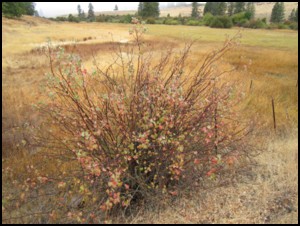
|
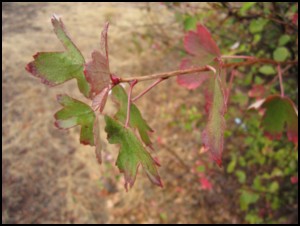
|
Heading back to the Goldendale area, but taking some different back roads this time, I found this Ribes aureum, which isn't all that exciting though the yellow spring flowers are nice. As soon as I got up above the river and onto the plateau, I was in a thick fog once again, but this time without the drizzle.
|
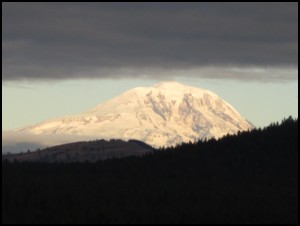
|
As I went northwest, and up, the fog begin to lift somewhat, providing this view of Mt. Adams. I made a few final attempts to get into the hills north of this area, but no luck, just more locked gates. I wonder who is behind this, and why. The highest I could get was about 2,800' and I didn't see anything exciting.
|
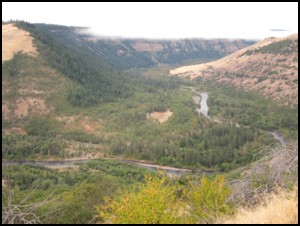
|
Going west a bit more, I turned off at the Glenwood Highway which soon led to the beautiful Klickitat River Canyon. The trees below are mostly Pinus ponderosa and LOTS of Quercus garryana.
|
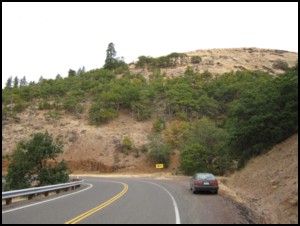
|
No shortage of Quercus garryana here – they grow all over the sides of the canyon. Seed, however, was scarce, perhaps because I was a couple weeks too late for it.
|
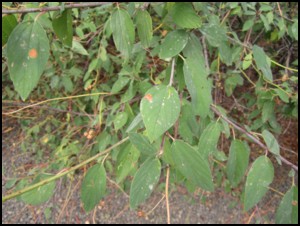
|
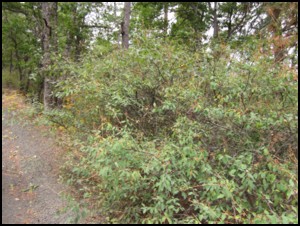
|
Ceanothus integerrimus (deerbrush) is a sturdy, drought-tolerant native species seldom encountered in nurseries or gardens. Being deciduous, it doesn't look its best now, but it is actually very showy in bloom.
|
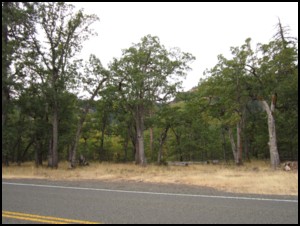
|
On the canyon floor was an open forest of majestic old oaks.
|
|
Just after the highway crosses the Klickitat River was the opportunity to turn off to the right and stay closer to the river's edge while the main highway begins its gradual ascent. This I took, and found this Heuchera, which I think would be a form of H. cylindrica, and another Penstemon. I again had to retrace my steps when I came to a big “Do Not Enter” sign at the border of the Yakama Indian Reservation.
|
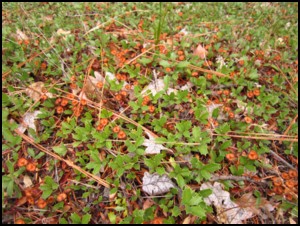
|
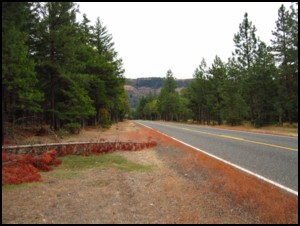
|
Back on the main highway I soon found something interesting enough: more Ceanothus prostratus. This time the plants had more typical green leaves of the usual size (about 1/2 to 3/4 inch). This particular plant showed evidence of having flowered heavily.
|

|
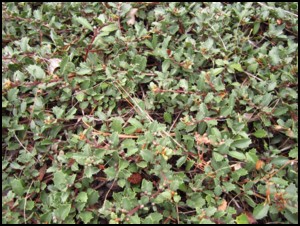
|
This one was especially nice as it formed a very dense, dark green mat. When I returned home, I discovered that I should have looked around this area more thoroughly – Apparently Arctostaphylos patula was recorded from here (actually about 1 mile back from here on the highway). Oh well, something else to check out on a future trip.
|
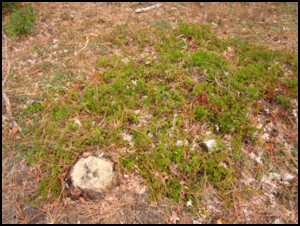
|
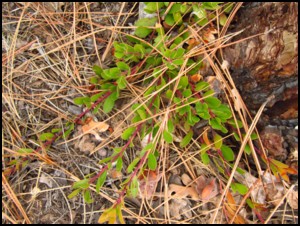
|
Arctostaphylos nevadensis made a re-appearance about this time as well.
|
|
Then after a couple miles things started getting more exciting as I entered a hybrid swarm of what could only be A. patula x A. nevadensis.
|
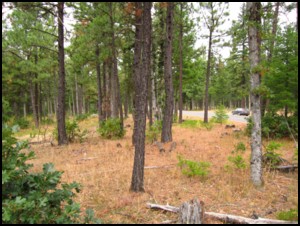
|
Here's a broader view of what this area looked like: primarily open pine and fir forest with some oaks.
|

|
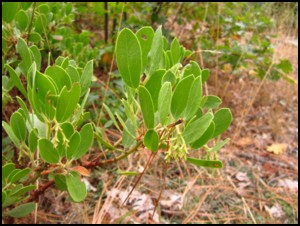
|
After looking around the area for a few minutes this 2' tall plant was the tallest Arctostaphylos I could find, and the closest thing to a real A. patula within sight. So is it A. patula? By Oregon or California standards, perhaps not: it looks more like a patula x nevadensis hybrid that happens to be closer to patula than average. It certainly looks quite different from A. patula growing on the other side of the Columbia River near Mt. Hood. However I don't doubt that this plant, or one like it, would immediately be keyed to A. patula in one of our university herbaria.
|
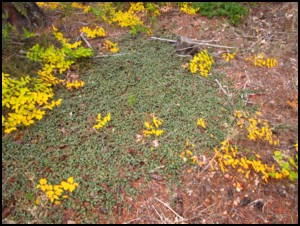
|
The answer may depend on how broadly one wants to define A. patula; ultimately, it might take a DNA analysis to get any really meaningful answer. In any case, the important thing is that it's a nice looking plant regardless of what you call it. And then in a mile or so these plants were behind me, though I kept looking into the forest for more of them as I drove along. Had I known they would end so soon, I would have stayed longer to look around the area more thoroughly. Oh well. But I did stop for this interesting Ceanothus prostratus with quite grey leaves that were much larger than usual on a completely flat plant that must have been only 3/4” tall.
|

|
As the road continued its subtle climb towards Glenwood, scenic views of the Klickitat River canyon appeared through the trees.
|

|

|
Hanging on the cliffs above the canyon were these Penstemons, with a leaf color ranging from sea green to spectacular glaucous-blue. With foliage like this, who cares what the flowers look like?
|
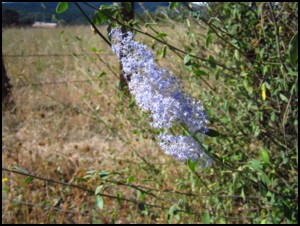
|
I then drove into Glenwood just to see what it was like. Set in a high valley sufficiently removed from the Columbia Gorge area, and most anywhere else, to be quite isolated; it seemed like a town forgotten by time, with old houses, old farms and old machines. Had clouds not been in the way, a very up-close view of a massive Mt. Adams would have dominated the skyline. Then I drove southwest towards Husum. Garrya fremontii and Arctostaphylos columbiana have been recorded from this area, but I couldn't see or find either of them, not helped by the fact that I was driving into the sun. But I did find this Ceanothus integerrimus blooming out of season – those flowers aren't bad, are they?
|

|
After passing through White Salmon (pictured here), which seemed like a nice town, I ended up in Bingen for lunch where I stopped for lunch at Los Reyes Mexican restaurant. Food and service were both quite good although the price was a couple dollars more for the same fare than our favorite Mexican restaurant here in Port Angeles. Still I very much enjoyed sitting out on the patio in short sleeves enjoying the warm sun and looking at the river and the mountains, on what was a cold and cloudy day back home. Before driving away I took a few minutes to look at Bingen Mountain (one of my atlases calls it Burdoin Mountain) - that's the one looming behind White Salmon in the background of this photo - with my binoculars for Arctostaphylos patula, which has been recorded from Bingen, but I didn't see anything exciting (and even if I had, I might not have been able to get to it). More about that later.
|
Page 4 - Big Lava Bed >>
|